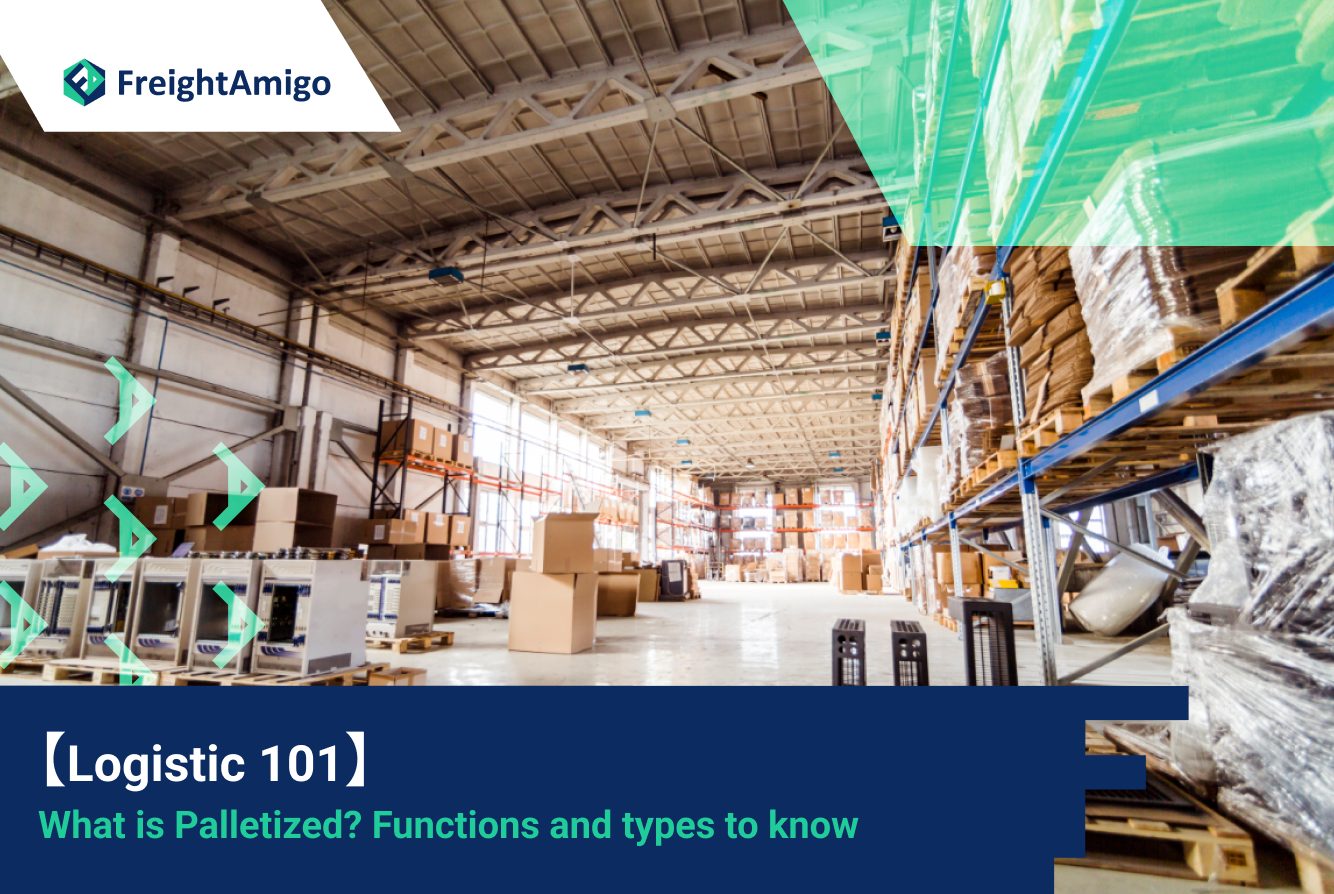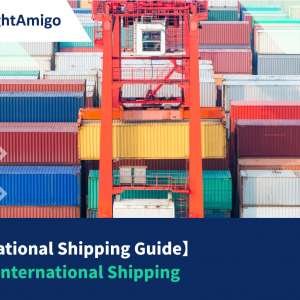Author Name:Tiffany Lee – Marketing Analyst at FreightAmigo
Palletized shipping has become a popular choice for businesses looking to transport large quantities of goods in bulk. By consolidating items onto a pallet, businesses can streamline the shipping process and reduce the risk of damage to their products. In this blog, FreightAmigo will explore the different types of palletized shipping, their functions, and some tips for successful palletized shipping.
Want To Compare The Best Express, Air Freight, Sea Freight, Rail Freight & Trucking Rates So As To Have Better Control On Cost?
Types of Palletized Shipping:
There are several different types of palletized shipping, including standard pallets, euro pallets, and custom pallets. Standard pallets are the most common and measure 48 inches by 40 inches. Euro pallets are slightly smaller, measuring 47.2 inches by 31.5 inches. Custom pallets can be made to any size and shape required, making them ideal for shipping oversized or irregularly shaped items.
When it comes to shipping large volumes of goods, Full Container Load (FCL) shipping is a popular choice for businesses. Two types of FCL shipping that are commonly used are FCL palletized and FCL floor palletized. Two types of FCL shipping that businesses can use to transport large quantities of goods. FCL palletized shipping is ideal for packing goods onto pallets, while FCL floor palletized shipping is suitable for larger items that cannot be easily palletized.
FCL Palletized:
FCL palletized shipping involves packing goods onto pallets and loading them into a shipping container. This allows for easy handling and transportation of goods, as the pallets can be moved using forklifts or pallet jacks. Additionally, palletized shipping helps to protect goods from damage during transit by keeping them off the floor of the container. FCL palletized shipping is a great option for businesses shipping large quantities of goods that can be packed onto pallets, such as boxes of products or machine parts.
FCL Floor Palletized:
FCL floor palletized shipping is similar to FCL palletized shipping, but instead of packing goods onto pallets, they are loaded onto the container floor and separated by wooden or plastic spacers. This method is also known as “block stowage”. Like FCL palletized shipping, FCL floor palletized shipping allows for easy handling and transportation of goods. However, it is typically used for larger items that cannot be easily packed onto pallets, such as heavy machinery or vehicles.
Steps for Palletized
- Choose the right pallet: Select a pallet that is appropriate for the size and weight of the items being shipped. Standard pallets (48 inches by 40 inches) are the most common, but custom pallets can also be made to fit specific items.
- Pack the items onto the pallet: Arrange the items securely onto the pallet, making sure to distribute the weight evenly to prevent tipping or shifting during transit. Use straps or shrink wrap to secure the items onto the pallet.
- Label the pallet: Attach a label to the pallet with the recipient’s name, address, and contact information. This label should be clearly visible and include any necessary customs documentation for international shipments.
- Load the pallet onto a truck or container: Use a forklift or pallet jack to load the pallet onto a truck or container. Make sure to secure the pallet to prevent movement during transit.
- Transport the pallet to its destination: The pallet will be transported to its destination via truck, boat, or plane, depending on the shipping method chosen.
- Unload the pallet: Upon arrival, use a forklift or pallet jack to unload the pallet from the truck or container. Check the items for any damage during transit.
Tips for Palletized Shipping:
To ensure successful palletized shipping, businesses should follow some important tips. Firstly, it is important to choose the right pallet for the items being shipped. Standard pallets are ideal for most items, but custom pallets may be necessary for oversized or irregular items. Secondly, the pallet should be packed tightly and securely to prevent the items from shifting during transit. Thirdly, the pallet should be labeled with the correct address, contact information, and any necessary customs documentation. Finally, businesses should choose a reputable carrier with experience in palletized shipping to ensure the items arrive at their destination on time and in good condition.
There Are Different Options For Cargo Transportation. If You Want To Choose The Most Convenient And Suitable Solution, It Is Best To Have The Full Support Of Logistics Experts! If You Are Planning To Ship Goods Overseas, Please Go To The FreightAmigo Page For Inquiries.
Extended Readings
【Logistics101】Understanding Landed Cost and its Impacts to Your Business
【Logistics 101】Definition of Seaport Codes and their Importance
【Guide to Sea Freight】 | Thing you need to know about Ocean Freight Forwarder
==
If you have any inquiries on logistics/supply chain, feel free to contact FreightAmigo now:
Chat with us online OR
Phone / WhatsApp: +852 27467839









































